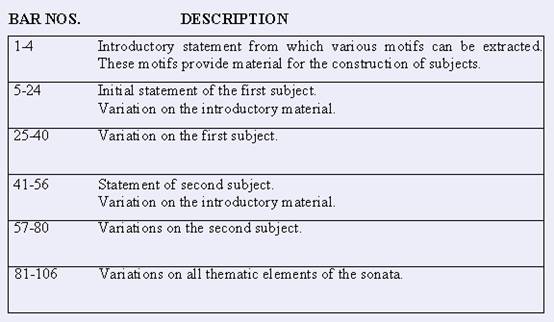Table 1: The
derivation of subject material in the exposition of the first
movement

Drawing from his observations, Leiken notes that one way
of understanding the exposition of the Allegro is viewing it as a sequence of
variations. One might note that a similar phenomenon can be found in Schubert's
Quartet D. 887.
Leiken follows on from Samson's reasoning for the lack of
the first subject in the recapitulation. He similarly dismisses the notion that
heavy exploitation of the first subject in the development renders its
restatement in the recapitulation redundant, his reasoning being that all
themes are quoted in the development and that it is not based almost
exclusively on the first subject as stated by Leichtentritt.
He adds that, since all the themes are variations of the same material, the
development becomes yet another variation.
Furthermore, even if the first subject were the sole basis for the development,
many Classical developments based only on the first subject are followed by a
full recapitulation (e.g., Beethoven's sonata Opus 13). Leiken feels that
although this approach was not used by Chopin in opus 35, it is valid in that
after the